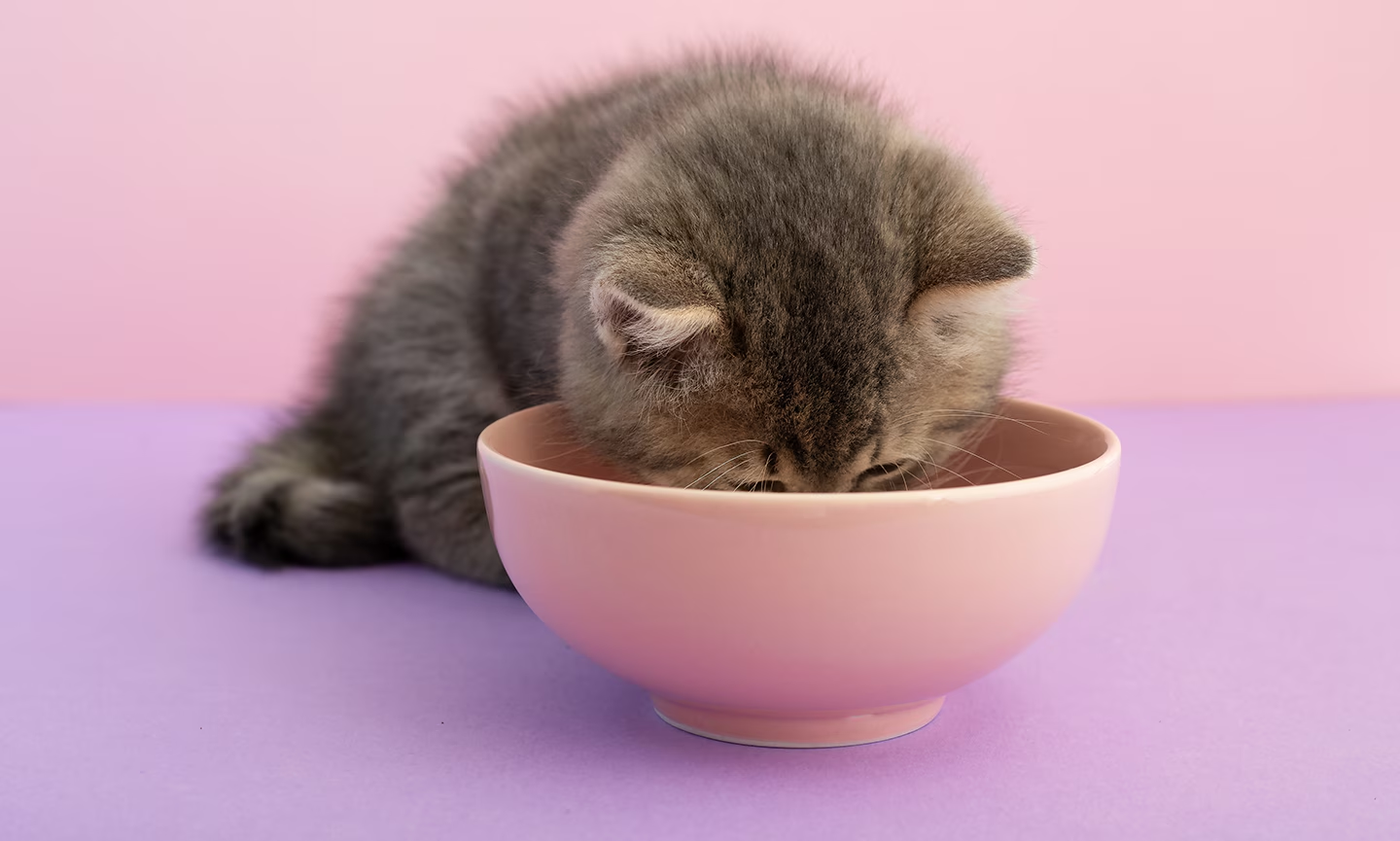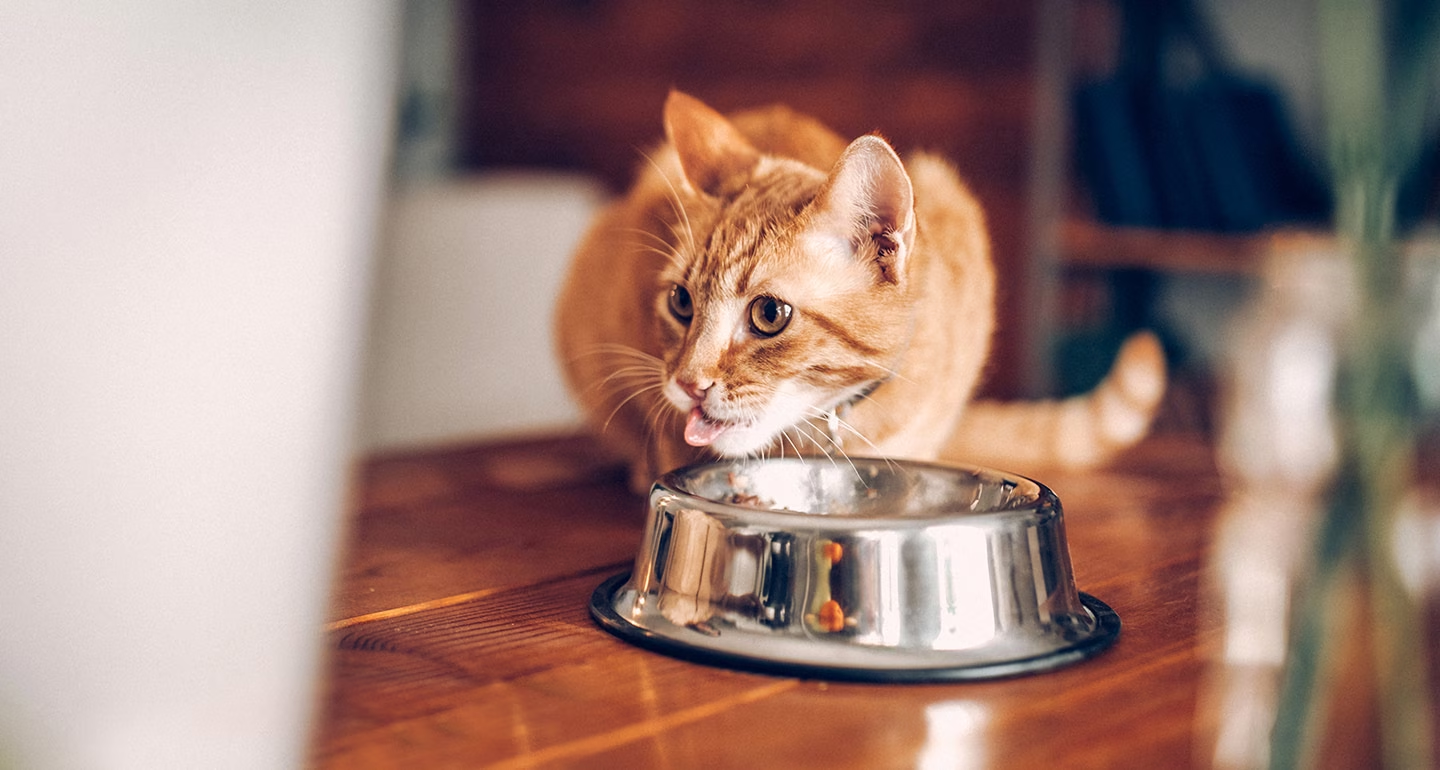Figuring out the right amount of dry food for your feline friend can feel like deciphering an ancient riddle. Bag labels are filled with cryptic cups and vague recommendations, leaving you wondering – how many grams of dry food does my cat actually need?
Fear not, fellow cat parent! This guide will unravel the mystery of feline portion control, equipping you with the knowledge to keep your cat happy and healthy.

In This Article
- 1 Understanding Feline Needs: Age, Activity Level, and Body Condition
- 2 Decoding the Label: Beyond Cups
- 3 A General Feeding Guide by Weight
- 4 Beyond Grams: Additional Tips for Feeding Your Cat
- 5 Factors to consider when determining the quantity of dry food
- 6 Briefly mention the importance of providing the right amount of dry food for cats
- 7 Activity level and body condition of the cat
Understanding Feline Needs: Age, Activity Level, and Body Condition
First things first, every cat is an individual. Their dietary needs depend on several factors, including:
- Age: Kittens are growing bundles of energy, requiring significantly more calories per pound than their adult counterparts. Senior cats, on the other hand, often have a more relaxed lifestyle and may need slightly less food.
- Activity Level: The more active your cat, the more calories they burn. An indoor cat who spends most of their day napping will have different needs than an outdoor adventurer or a playful indoor feline.
- Body Condition: Is your cat a sleek athlete or a cuddly cuddle monster? Maintaining a healthy weight is crucial. A skinny cat might need a slight increase in food, while a portly kitty might benefit from a gentle reduction.
- Here’s a helpful tip: Gently feel your cat’s ribs. You should be able to feel them without excessive pressure, but they shouldn’t be visibly protruding. This indicates a healthy weight.

Decoding the Label: Beyond Cups
Dry food bags typically display feeding recommendations in cups. However, this method can be imprecise. Cups can vary in size depending on the brand, and measuring kibble by eye can lead to overfeeding.
Luckily, most labels also provide a feeding guide in grams. This is a more accurate way to ensure your cat receives the appropriate amount of food.
A General Feeding Guide by Weight
Remember, this is just a starting point! Adjust the amount based on your cat’s individual needs.
Kittens (up to 6 months old): Growing kittens are little furnaces, needing approximately 50-75 grams of dry food per day, divided into multiple meals.
Adult Cats (1-7 years old): The sweet spot for adult cats often falls between 40-60 grams of dry food daily.
Senior Cats (over 7 years old): Senior kitties may require slightly less food, around 30-40 grams per day, due to a decrease in activity levels.
Consulting Your Veterinarian for Personalized Advice
Veterinarians are invaluable partners in your cat’s health care. During routine checkups, discuss your cat’s diet with your vet. They can consider your cat’s specific needs, breed, and any underlying health conditions to provide a personalized feeding plan.
They can also help you interpret the often-complex information on food labels and ensure your cat’s dry food provides the right balance of nutrients.

Beyond Grams: Additional Tips for Feeding Your Cat
While grams are a great starting point, here are some additional tips to ensure your cat thrives:
- Monitor Your Cat’s Weight: Regularly weigh your cat at home or the vet’s office. Adjust their food intake if their weight fluctuates significantly.
- Free-Feeding vs. Scheduled Meals: Some cats do well with scheduled meals, while others prefer to graze throughout the day. Discuss this with your vet and experiment to see what works best for your feline friend.
- Fresh Water is Key: Ensure your cat has constant access to clean, fresh water. This is especially important for cats on a dry food diet.
- High-Quality Food Matters: Invest in high-quality dry food formulated to meet your cat’s specific needs. Look for ingredients like real meat and avoid fillers like corn or wheat.
- Beware of Treats: Treats are a delightful way to bond with your cat, but they should be offered in moderation. Factor treat calories into your cat’s daily food intake to avoid overfeeding.
- Slow Down Fast Eaters: Some cats are notorious gulpers. Consider puzzle feeders or slow-feed bowls to encourage them to eat more slowly and prevent digestive issues.
Factors to consider when determining the quantity of dry food
Here are the key factors to consider when determining the quantity of dry food for your cat:
- Age: Kittens have much higher metabolisms than adult cats and senior cats. They require more calories per pound of body weight to support their growth.
- Activity Level: An active cat who burns a lot of calories will need more food than a lazy indoor cat.
- Body Condition: Is your cat at a healthy weight? A thin cat might need more food, while a chubby cat might need less. Aim for a body condition where you can easily feel the ribs without them being prominent.
- Quality of Food: High-quality dry food with a dense nutrient profile will require less food compared to a lower-quality food with more fillers.
- Treats: Factor in treat calories! Treats should be a small portion of your cat’s daily food intake to avoid overfeeding.
- Health Conditions: Certain health conditions can affect a cat’s metabolism and nutrient needs. Consult your veterinarian if your cat has any underlying health issues.

Briefly mention the importance of providing the right amount of dry food for cats
Providing the right amount of dry food for your cat is crucial for their health. Overfeeding can lead to obesity and weight-related health problems, while underfeeding can cause malnutrition. Dry food is concentrated in calories, so even a small amount can pack a punch. Finding the right balance keeps your feline friend happy and healthy.
Activity level and body condition of the cat
Activity Level
- Active Cats: These cats burn more calories and may need more food than their less active counterparts. Signs of an active cat include regular bursts of playful energy, climbing, and jumping.
- Less Active Cats: These cats tend to sleep and lounge more and may require less food to maintain a healthy weight.
Body Condition
- Ideal Weight: Ideally, you should be able to feel your cat’s ribs easily with a light layer of fat over them. When you look down at your cat from above, their waist should be visible.
- Overweight: An overweight cat will have a thicker layer of fat covering their ribs, and their waist will not be visible from above.
- Underweight: An underweight cat will have prominent ribs and little to no waist definition.
Finding the Balance
Many factors influence a cat’s dietary needs, so it’s always best to consult your veterinarian to determine the ideal amount of food for your specific cat. They can consider your cat’s breed, age, activity level, and body condition to provide a personalized recommendation.

By understanding your cat’s individual needs and following a gram-based feeding approach, you can ensure they receive the proper nourishment for a long and healthy life. Remember, consulting your veterinarian is crucial for personalized advice and a happy, healthy feline companion.
